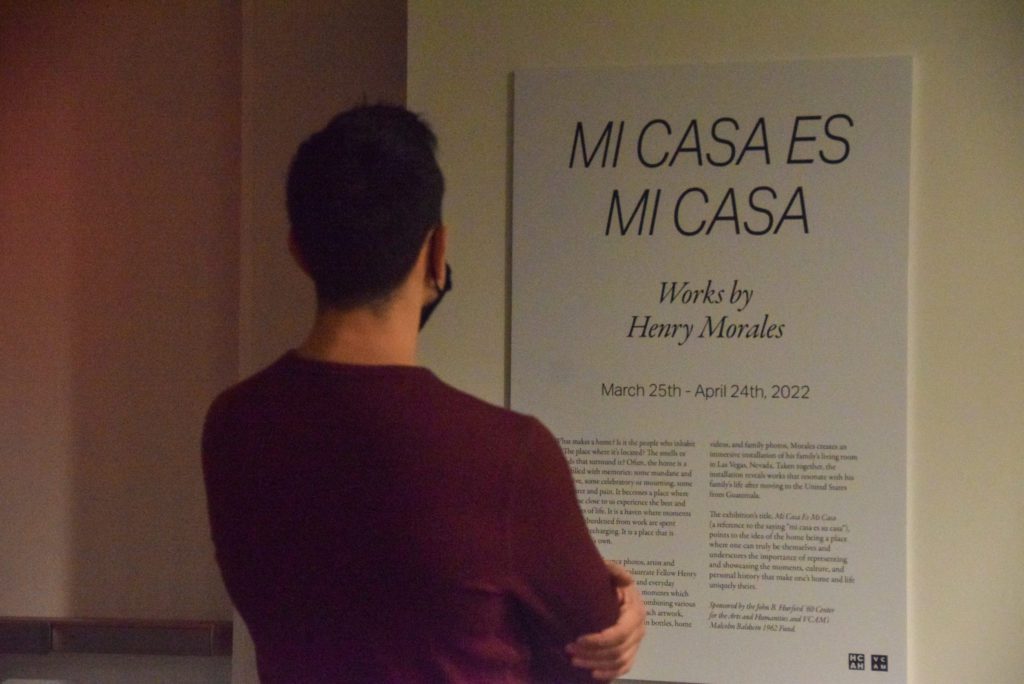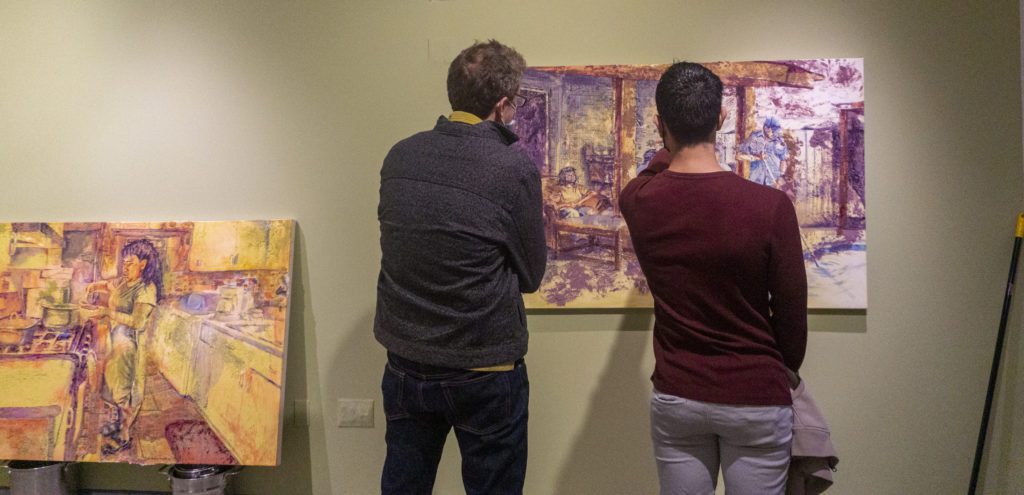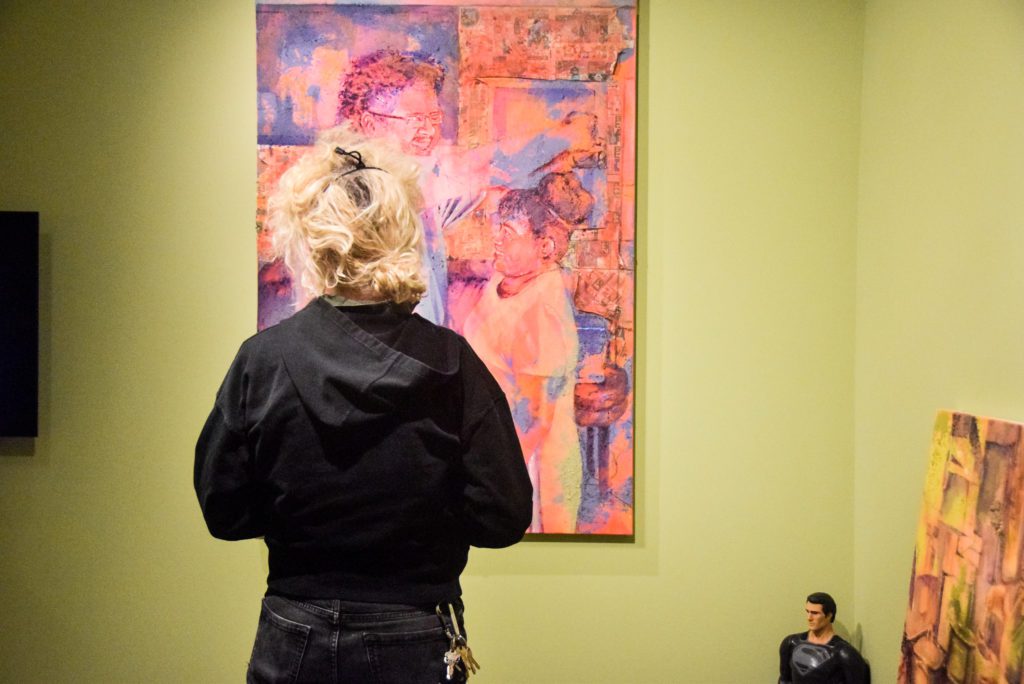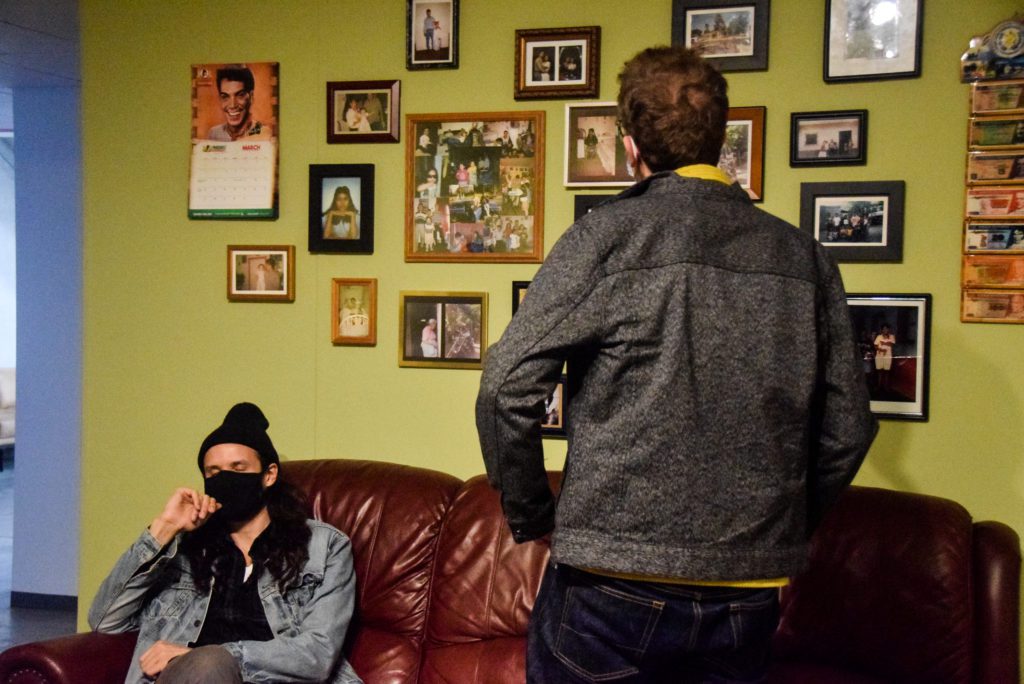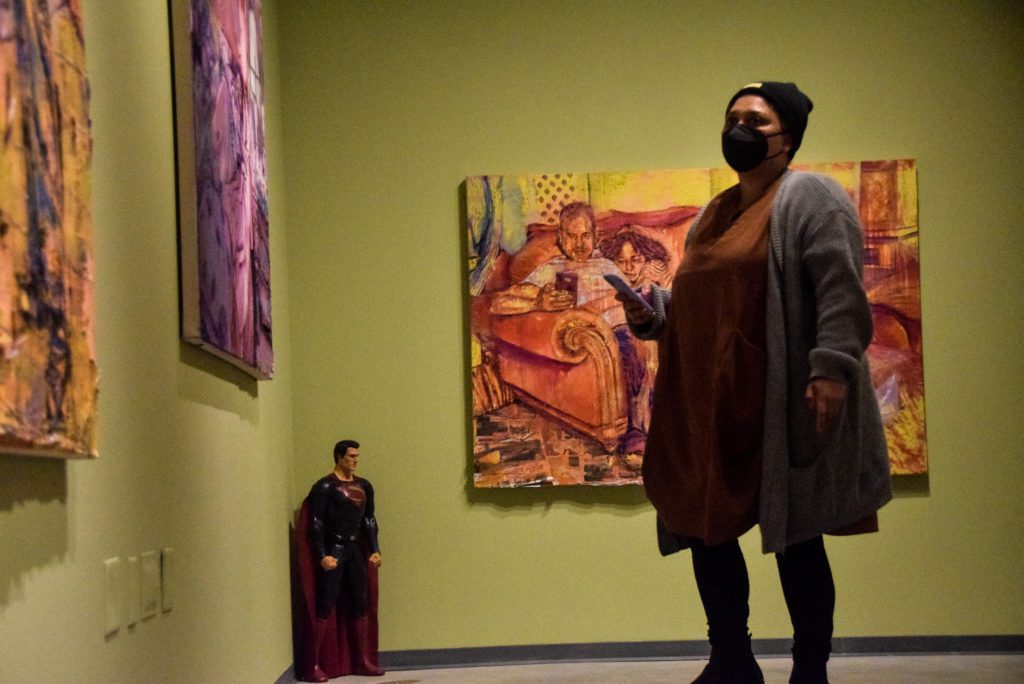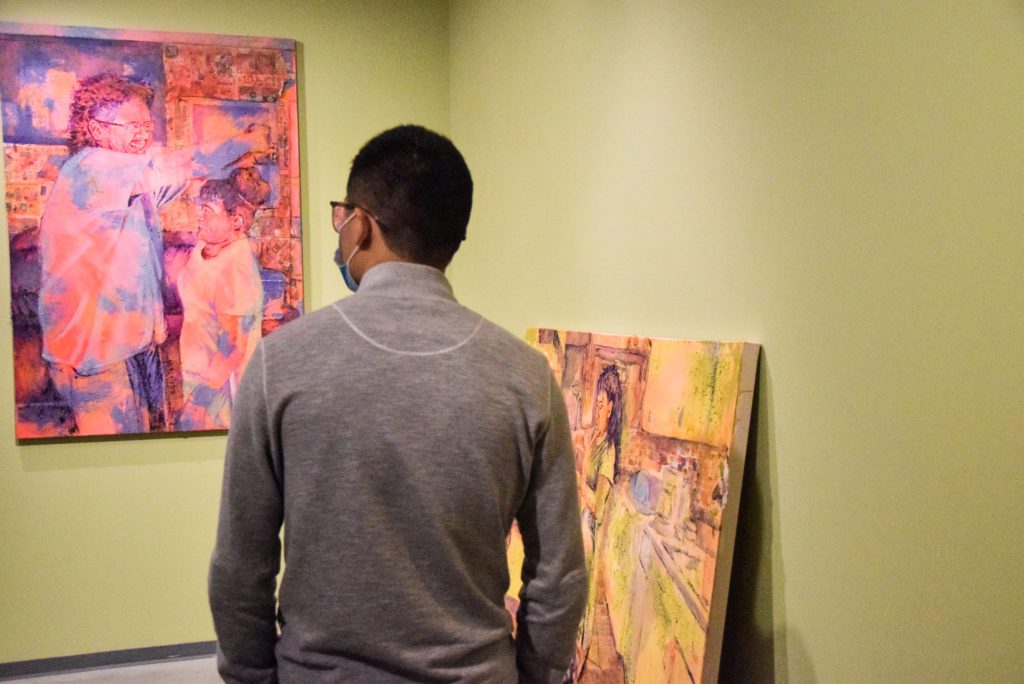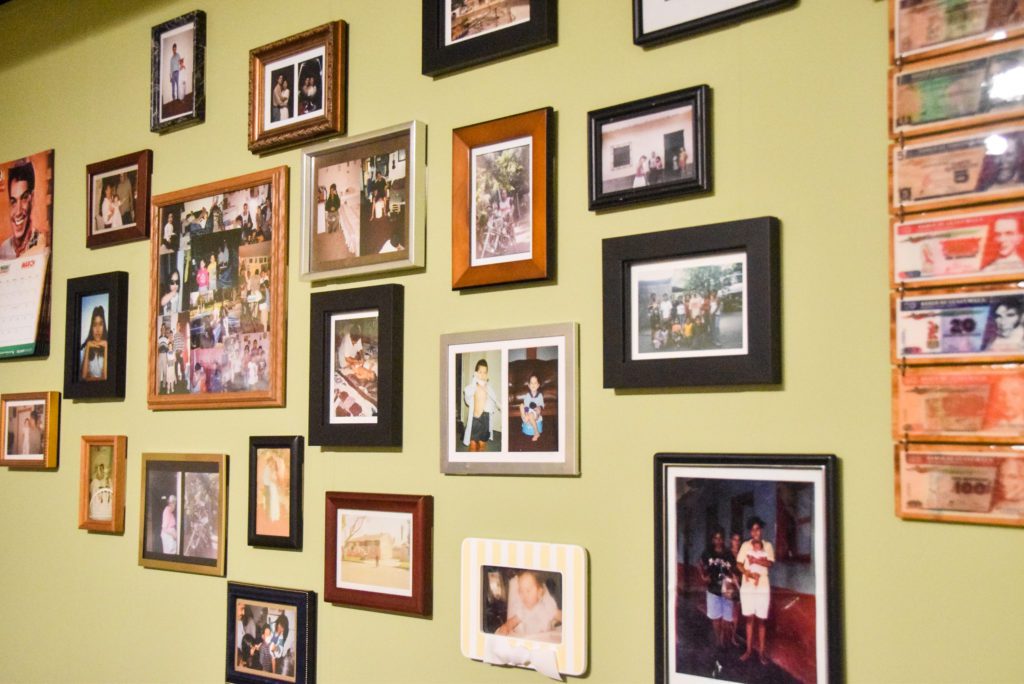As Dorothy Gale once said, “There’s no place like home.” Hurford Center Post-Bac Henry Morales’ new exhibition, Mi Casa Es Mi Casa, explores the intimacy, privacy, and comfort of home—specifically his own home. Through the use of paintings, video, sculpture, and more, Morales arranged VCAM’s Lower Create Space into his childhood living room to celebrate his upbringing as part of a working-class, Latino immigrant family. The exhibition, which opened on March 25, will be on view until April 24.
In his previous work, Morales has honored his parents’ labor as working-class people. This time, he wanted to showcase them in the home, a more relaxed setting. The title of the exhibition is a play on the phrase “mi casa es su casa.” The change from “su” to “mi” emphasizes the individuality and self-identity that home breeds. “With Latino immigrants, we do share a lot of commonalities in life experiences,” he said, “but there’s more you can dig into that make your family [and] your home uniquely yours.”
The exhibition features an array of work, each detailed specifically to reflect the uniqueness of his home. Morales’ family photos are framed on the wall and scattered across a glass coffee table. There is a TV playing a montage of his home videos mixed with clips from his favorite TV shows growing up. The two large Superman action figures in the corners of the space are an ode to his family’s tendency to hoard random objects. The soundtrack is a playlist of Morales’ favorite Spanish, Pentecostal, and pop songs that remind him of home. Vitamin bottles, Guatemalan money, fruit baskets, scattered newspapers and coupons, and spilt coffee add to the homey aesthetic of the space. Two wine-colored couches, similar to his family’s real ones, provide seating for attendees.
The most alluring works in the exhibition are the six vibrant paintings depicting Morales and his family in their home. Most of the paintings are hung on the wall, but one of them, which portrays his mother cooking in the kitchen, rests on top of piles of cooking pots similar to his mother’s. The paintings, like much of Morales’ artwork, have a unique, “chipped” style inspired by cracked walls in different urban communities. Even the material he used to give his paintings their rugged texture is connected to family. “I use joint compound because it was a material that my dad used in his job as a maintenance guy, and then also [by] my cousins as construction workers,” he explained. “And then [for some paintings], what I did was mix dirt from my parents’ front yard with the paint. And that kinda gave me this similar kind of stucco, cement, texture.” While painting, Morales used specific hand motions to mimic the cleaning, wiping, and sweeping of his parents’ labor around the house.
Morales’ family is very fond of the artwork. “They’ve seen the paintings, and they love [them],” he said. At this point they’re kind of accustomed to me, painting them. But they think it’s great. They’re excited.”
Morales’ work resonated with many students, particularly those who come from similar backgrounds as him. “Henry’s exhibition is one of the most touching and nostalgic experiences that a Latinx student can experience at Haverford,” said Jorge Paz Reyes ’24. “Entering Henry’s living room is like entering my house. The frames, decorations, and TV shows all encapture the atmosphere of an immigrant Latine household. It reminded me of everything I have accomplished to get to Haverford, and everything I have left behind. Mi Casa Es Mi Casa gives me that warm sensation that you get when you come home after months of being excluded in a different environment.”
In addition to the exhibition, Morales will also be hosting an artist talkback session with the Alliance of Latin American Students (ALAS). Together, Morales and the students will reflect on their upbringings in Latinx households. The talkback is open to all the entire community and will take place on Tues., April 12 at 4:30 p.m. in VCAM’s Lower Create Space.
Morales thanks James Weissinger, Matthew Callinan, Kent Watson, Gus Stadler, and the rest of the John B. Hurford ’60 Center staff for their assistance and support in making this exhibition possible. He hopes the people who attend the exhibition walk out with a sense of pride in their individual identity. “I want people to think of all the things that made them who they are as people.”

